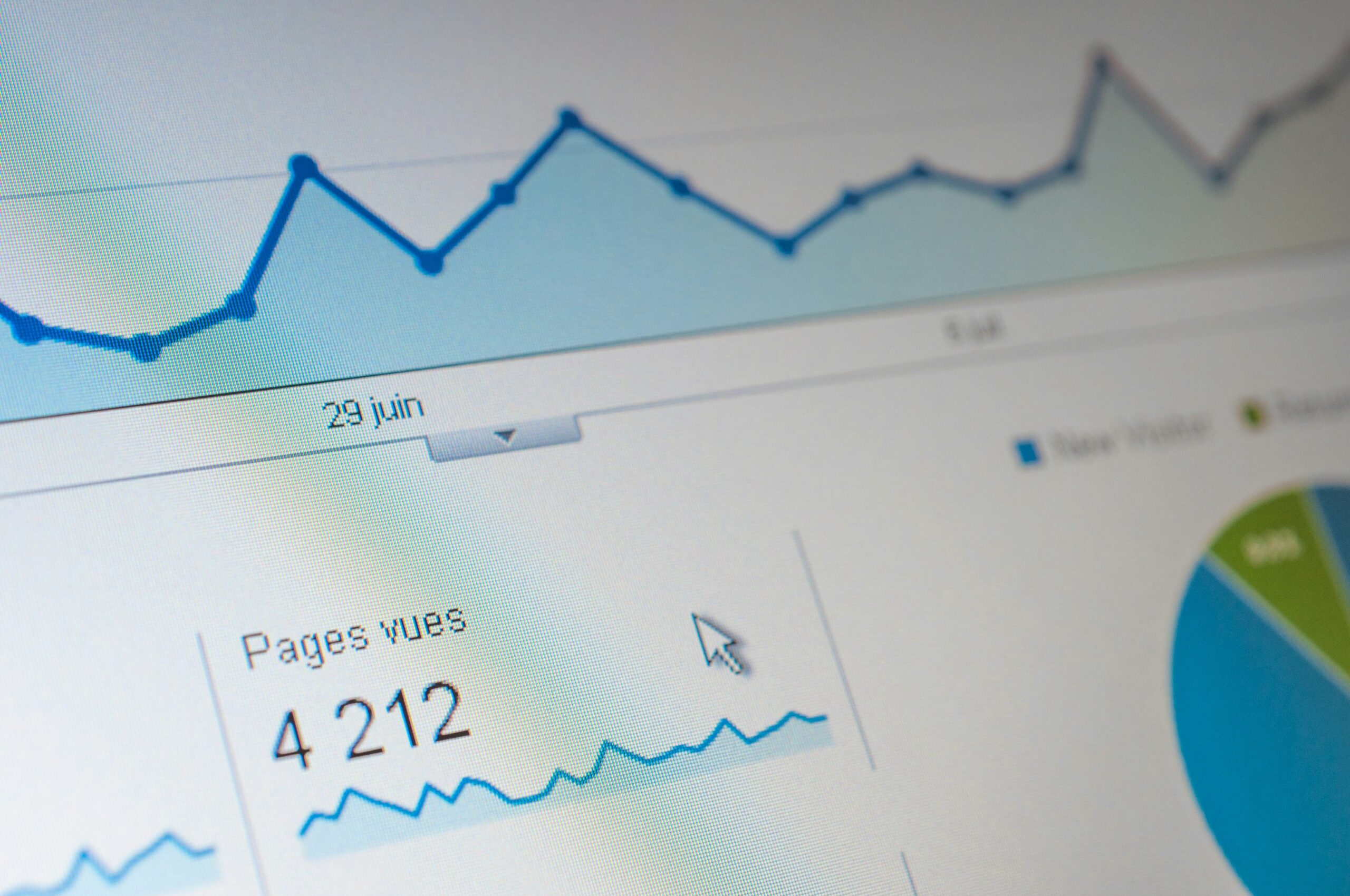Is your website traffic not meeting expectations? If you find yourself struggling to attract visitors, you’re not alone. This post outlines ten proven strategies to boost your website traffic when results fall short. Readers will learn how to assess current traffic sources, optimize content for search engines, and effectively utilize social media. By implementing these strategies, businesses can enhance their online visibility, attract more visitors, and ultimately drive leads and revenue. Let’s tackle this problem together and turn your website into a busy hub.
Key Takeaways
- Regularly assess website traffic sources to identify underperforming channels for improvement
- Understand audience demographics to tailor content and enhance engagement effectively
- Optimize on-page SEO elements like title tags and meta descriptions to boost visibility
- Create engaging and shareable social media content that communicates the unique value proposition
- Utilize analytics tools for insightful data about visitor behavior and content performance
Assess Your Current Website Traffic Sources

Evaluating website traffic sources is essential for any business aiming to increase its online visibility. This involves identifying channels that are underperforming, allowing for targeted improvements. Analyzing audience demographics and behavior can reveal insights into customer preferences. It’s also vital to assess the effectiveness of current SEO strategies, including the role of generated content, backlinks, and tools like Facebook Ads to drive engagement.
Identify Which Channels Are Underperforming
Understanding which channels are underperforming can guide businesses in refining their strategies to boost website traffic. For instance, if social media engagement is low, it might be time to reassess the content being shared or the platforms used to capture attention. Additionally, tracking the sources that generate fewer email addresses can help pinpoint where improvements can be made, ensuring that each part of the marketing strategy works effectively.
Analyze Your Audience Demographics and Behavior
Understanding the demographics and behavior of a target market is key to troubleshooting low website traffic. Effective research into who visits the site can reveal gaps in audience engagement and preferences, allowing for adjustments in website design. By analyzing these insights, businesses can create content that resonates more with their audience, enhancing overall user experience and encouraging return visits:
Evaluate the Effectiveness of Your Current SEO Strategy
Evaluating the effectiveness of current SEO strategies is vital for enhancing website traffic and ultimately increasing revenue. Businesses should regularly assess their search engine rankings and keyword performance to identify areas needing improvement in their digital marketing approach. For instance, if certain keywords are not generating traffic, it may be necessary to refine SEO optimization efforts or update content to better align with audience intent:
- Analyze keyword performance regularly.
- Review website content for relevance and freshness.
- Utilize analytics tools to track search engine performance.
- Adjust on-page SEO practices based on data insights.
Optimize Your Content for Search Engines

Incorporating relevant keywords naturally into website content is crucial for improving search engine visibility. Businesses should also focus on on-page SEO elements, such as optimizing title tags and meta descriptions, to enhance accessibility and navigation. Creating high-quality content that addresses user intent ensures better engagement and the generation of leads while maintaining an effective page layout. Each of these strategies plays a vital role in driving more traffic to the website.
Incorporate Relevant Keywords Naturally in Your Copy
Incorporating relevant keywords naturally into website content is essential for improving search engine visibility and attracting targeted traffic. Keywords like “landing page,” “CSS,” “web design,” and “XML” should be seamlessly integrated into the text, enhancing readability while signaling to search engines what the content is about. Furthermore, combining these keywords with effective social media marketing strategies can lead to increased engagement and higher conversion rates, addressing the common pain points of businesses struggling to reach their audience.
Tracking how these keywords perform can help businesses adapt and refine their content:
Improve on-page SEO Elements Like Title Tags and Meta Descriptions
Improving on-page SEO elements like title tags and meta descriptions is key to enhancing user experience and increasing active users on your website. When conducting keyword research, it’s important to use terms that resonate with your audience while conveying credibility. Experimenting with different title tags and descriptions can help identify what draws the most clicks, ultimately boosting traffic and engagement on your site.
Create High-Quality, Informative Content That Addresses User Intent
Creating high-quality, informative content that addresses user intent is crucial for maximizing visibility. This type of content not only engages visitors but also aids in conversion rate optimization by aligning with what users are actively seeking. Incorporating usability testing into the content development process ensures that the website architecture meets user expectations, leading to better engagement.
Understanding the target audience’s needs helps shape effective campaigns that resonate with them. Content should provide clear, actionable information that solves problems and answers questions. This approach not only builds trust with users but also encourages them to explore further, increasing the chances of conversion:
Utilize Social Media to Expand Your Reach

To effectively increase website traffic using social media, businesses should focus on selecting the right platforms that align with their target audience. Creating engaging and shareable content that clearly communicates the value proposition is crucial. Additionally, interacting with the audience fosters community building, which can enhance brand loyalty and drive traffic to the website. These strategies will be explored further in the following sections.
Select the Right Platforms for Your Target Audience
Selecting the right platforms for a target audience is vital to effectively expanding website reach. For instance, different social media channels attract various demographics, so businesses should understand where their potential customers spend time online. Utilizing tools like Yoast SEO to optimize posts or ensuring fast loading through a content delivery network can significantly enhance usability, leading to better engagement and higher traffic from the chosen platforms.
Create Engaging and Shareable Content for Social Media
Creating engaging and shareable content for social media is essential for driving lead generation and expanding online reach. Businesses should focus on presenting their unique selling proposition clearly, as this not only captures attention but also encourages user interaction. Understanding audience behavior will inform the type of content that resonates best, so utilizing polls or questions can provide insights into audience preferences, contributing to a more effective content policy.
- Identify your unique selling proposition.
- Understand your audience’s behavior.
- Create interactive and engaging posts.
- Encourage user-generated content.
- Measure engagement to refine your strategy.
Interact With Your Audience to Build a Community
Engaging with users on social media is an effective strategy for building a strong community around a brand. By actively responding to comments, encouraging feedback, and fostering discussions about content marketing, businesses create a sense of belonging that keeps users coming back. This interaction not only builds trust but also leads to user-generated content, which serves as an authentic endorsement, helping to generate leads and increase website traffic.
Here are some key steps for interacting with your audience to build a community:
Leverage Email Marketing to Drive Repeat Traffic

Building an email list through valuable content offers is a key strategy for increasing website traffic. By crafting compelling email campaigns that encourage visits to the site, businesses can effectively engage their target audience. Segmenting the email list allows for tailored messaging, improving the relevance of each communication. These focused approaches can significantly enhance search engine optimization efforts and align marketing strategies with algorithm changes.
Build an Email List Through Valuable Content Offers
Building an email list through valuable content offers is a powerful strategy to enhance web traffic. By incorporating a strong call to action in blog posts or landing pages, businesses can encourage visitors to sign up for newsletters or exclusive resources. This approach not only boosts discoverability but also enables informed analytics tracking, allowing companies to understand user preferences better and tailor future content to meet their audience’s demands effectively.
Craft Compelling Email Campaigns That Lead to Website Visits
To effectively drive repeat traffic through email marketing, businesses must craft compelling campaigns that resonate with their audience. By focusing on relevance, emails should offer valuable content that addresses subscriber interests and queries, leading to increased visits to the website. Avoiding duplicate content and ensuring each campaign delivers fresh insights can significantly enhance search engine rankings and keep communication engaging for the audience.
Segment Your List for Tailored Messaging
Segmenting a mailing list is an effective strategy to enhance engagement and drive repeat traffic through email marketing. By analyzing subscriber behavior and preferences, businesses can tailor messages that resonate on a personal level, leading to increased lead conversion rates. For instance, incorporating a clear call-to-action button in emails, directing recipients to specific blog posts, can boost click-through percentages significantly, making communications more relevant and effective.
- Understand subscriber preferences.
- Create personalized content for different segments.
- Utilize clear call-to-action buttons for better engagement.
- Track open and click-through rates to refine strategy.
Monitor and Analyze Your Results Periodically

Utilizing analytics tools helps businesses understand traffic patterns, revealing what works and what doesn’t. Adjusting strategies based on data insights can lead to improved website performance. Additionally, conducting A/B testing allows for enhancements in engagement and conversion rates, ensuring marketing efforts align with audience preferences. Each of these approaches is vital for effectively increasing website traffic.
Utilize Analytics Tools to Understand Traffic Patterns
Utilizing analytics tools is essential for businesses aiming to understand traffic patterns effectively. By monitoring metrics such as bounce rates, session duration, and page views, companies can pinpoint which areas of their website are attracting interest and which may be falling short. For instance, a website showing high traffic but low engagement on certain pages indicates a need for optimization, allowing businesses to make informed adjustments that enhance user experience and ultimately drive more meaningful traffic.
Adjust Your Strategies Based on Data Insights
Adjusting strategies based on data insights is crucial for improving website traffic. When analyzing analytics, businesses should pay close attention to metrics such as bounce rates and conversion rates, which can indicate where users are losing interest. For example, if a particular blog post has high views but low engagement, it may require a content refresh or a more compelling call to action to encourage deeper interaction and repeat visits.
Conduct a/B Testing to Improve Engagement and Conversion Rates
Conducting A/B testing is a practical approach for businesses seeking to enhance engagement and conversion rates on their websites. By comparing two versions of a webpage—such as different headlines, layout styles, or call-to-action buttons—companies can determine which elements resonate more with their audience. This data-driven method enables businesses to make informed decisions, ultimately leading to improved user experience and increased traffic.
Conclusion
Boosting website traffic is vital for any business striving to enhance its online presence and reach potential customers. Implementing targeted strategies—such as analyzing traffic sources, optimizing content, and utilizing social media—ensures that businesses can effectively engage their audience and drive conversions. Regularly monitoring results through analytics empowers businesses to adjust their approach based on data-driven insights. By focusing on these proven tactics, companies can overcome challenges and sustained growth in their online visibility.
